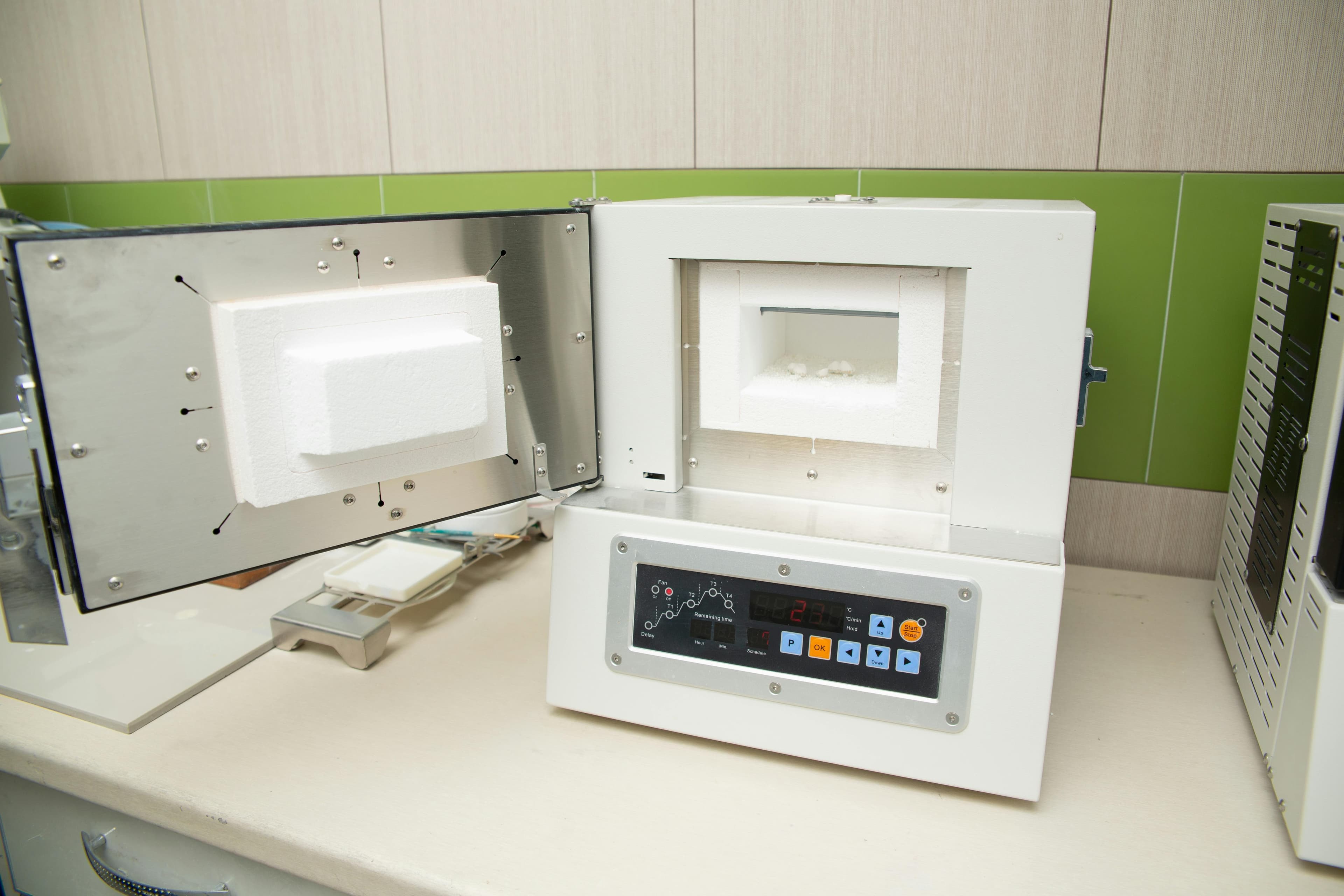How to use and maintain a dental laboratory furnace?
A dental furnace is a state-of-the-art piece of equipment used by dental lab technicians for dental restorative and prosthetic procedures.
These furnaces are commonly utilised in the process of the fabrication of metal ceramic crowns, bridges, inlays, and onlays. They basically strengthen and improve the structural integrity of the dental material.
During the fabrication process, there are various dental furnaces being used. Some of them are as follows:
- Burnout furnace: For burning out wax from casting rings
- Porcelain Furnace: For oxidation heat treatment of metal coping in preparation for porcelain firing
- Sintering Furnace: For sintering of the opaque layer, which is being applied in metal coping to mimic the tooth morphology
Directions to effectively use your dental furnace
Adequate Ventilation:
Install the furnace in a well-ventilated area to avoid the fume build-up. If there is poor ventilation, it can affect both the quality of the thermal process and potentially pose a health hazard to the operators.
Significance of Preheat and Cooldown Phases:
Proper preheating before placing the metal coping for oxidation and porcelain layering and cooling down after removing the same from the dental furnace without any rush is vital. This will avoid the thermal shock and prevent damage to the dental appliances.
Optimum Loading:
Use the dental sintering furnace with optimal loading. If you exceed the suggested load capacity, it will cause uneven heating and sintering. Which will then eventually affect the quality of the final product. And when there are multiple items to be sintered, it is advised to do them in separate batches to ensure uniform heat treatment.
Prescribed Temperature Settings:
The dental furnace must not be operated above or below its stated temperature as per the manufacturer’s guidelines. When the temperature is too high, the dental material will melt, deform, or develop internal cracks, and when the temperature is too low, it can lead to incomplete sintering, compromising the durability of the final product. And also make a routine calibration of your dental furnace to ensure its temperature accuracy.
Follow Material-Specific Guidelines
Since different dental materials require different sintering conditions, it is suggested to follow the settings as per the material manufacturer’s guidelines for optimal results. If a single universal setting is used, it can lead to compromising the quality of the final product. Some of the furnace manufacturers will design the furnace with custom settings that can be utilised for a tailored sintering process for the material at hand.

Steps to increase the longevity of your dental furnace
Scheduled maintenance:
Schedule a routine maintenance and check for any wear and tear. Replace any damaged components immediately because it's critical for extending the life of a furnace. Generally, for industrial dental furnace systems, it is recommended to have monthly maintenance.
Regular cleaning:
Remove the dirty and corroded elements from the chamber. As it can affect the quality of the sintering process and also reduce the longevity of the dental furnace. So, proper cleaning agents must be used as per the manufacturer's recommendation to avoid damaging the furnace and to maintain its integrity.
Routine Inspection:
Frequently check the furnace for any cracks or discolouration of heating elements. And also, modern furnaces are equipped with software integration. Therefore, there are few chances of software glitches, which can lead the dental furnace to behave unpredictably. Hence, update the furnace's software and keep backups of any custom settings.
Proper Thermal Cycling:
Repeated heating and cooling of the dental furnaces will lead to thermal stress. Which in turn can lead to cracks or other damage over time. Hence, a supervised and gradual temperature change will help reduce this effect.
Monitor Performance:
Track the performance of the dental furnace over time. If there occurs any unusual noise, smell, or temperature fluctuation, then it should be investigated promptly. Also, whenever the need for recalibration arises, it should be done to ensure the materials are heated to the correct temperature.
Dental furnaces are valuable assets in the dental industry, but their longevity depends on how well they are maintained. By properly inspecting, cleaning, and adhering to manufacturer guidelines, we can maximise these furnaces operation efficiently for many years.
